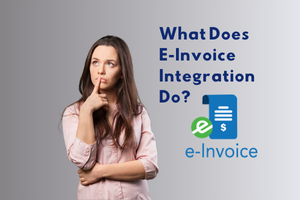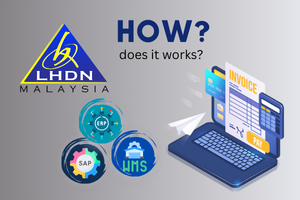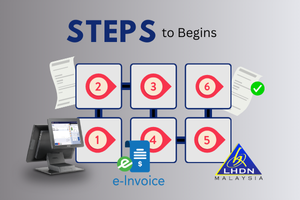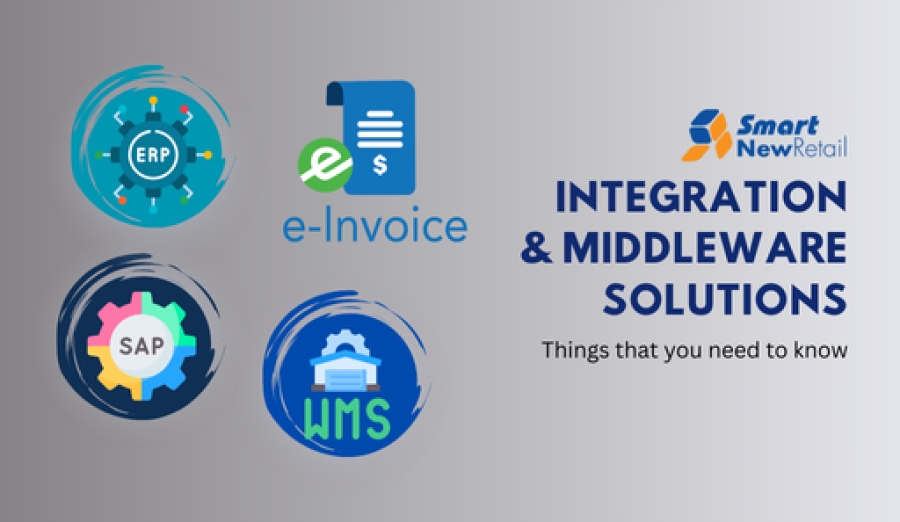What You Need to Know About E-Invoice Integration and Middleware Solutions
Business today moves faster than ever. Companies now handle money and records in new ways. One big change is the switch to e-invoices. These are not paper bills, but digital ones that go straight to the tax office. Many countries now ask businesses to use these kinds of invoices.
This change means companies need new tools. There are two main tools that help with this which are e-invoice integration and e-invoice middleware. Both help your business send bills the right way, on time and without trouble. They make sure your invoices follow the law and get checked fast.
This blog will help you through what these tools do and when to use each one. It will also show how to start and what steps make everything easier.
What Does E-Invoice Integration Do?
E-invoice integration connects your business billing system directly to the government’s e invoice system. It sends invoices automatically without printing or emailing them. This saves time, lowers mistakes and helps your team focus on important work. Instead of handling stacks of paper, your system takes over and sends everything at the right time.
This connection works best when your current billing or accounting system supports digital invoicing. It creates the invoice, fills in the right details and sends it to the tax office. You get back a message that says your invoice is accepted. You can then share that approved invoice with your customer.
Using e-invoice POS integration also helps your business stay in line with the rules. Governments now require businesses to report taxes in real-time. Integration makes that easy. You don’t need to do anything extra the system does it for you.
So, if your business handles lots of invoices every day, and your system supports new tools, integration is a strong option.

How Does the E Invoice System Work?
The e-invoice system works like a giant checker. It scans each invoice your business creates, checks the details, and decides if it follows the rules. When you send an invoice, the system examines key parts like:
- Company name
- Buyer’s name
- Prices
- Tax amounts
If everything looks right, the system gives the invoice a special code. This code might be a QR code or a unique number. You can show this to your customer to prove the invoice is approved and legal. Once that happens, the tax office also keeps a copy. You don’t need to send extra reports later as this step already covers that part.
This setup helps in many ways. It saves time when tax season comes, keeps your records neat and ensures everything stays transparent. The government designed the e invoice system to stop fraud, cut down on paper use and help businesses work faster and smarter.
So now, using the E-Invoice POS System is not just a helpful option but it’s something most businesses are expected to follow.
What Is E-Invoice Middleware?
E-invoice middleware stands in the middle between your system and the tax office. If your billing software can’t speak the tax system’s language, middleware translates. It grabs your invoice, reshapes it into the right format and sends it out. You don’t need to change your system as the middleware handles the hard part.
Many businesses like this because it’s easy. Middleware lets you keep your old software and still follow new rules. You don’t need to spend on a big upgrade. You just add middleware and carry on. This saves money and effort, especially for smaller businesses or teams who want simple changes.

Middleware also adds tools to track your invoices. You can check what got sent, what got approved, and what needs fixing. That gives you more control even if you don’t use fancy systems.
Middleware works well when you’re not ready to dive fully into e-invoice integration. It gives you time, freedom and support. It makes sure your invoices get to the e invoice system the right way. You keep doing what you know middleware handles the rest.
Read Also: Choosing the Best POS System Software in Malaysia for Your Business
Should You Use Integration or Middleware?
Businesses can choose between two trusted ways to manage e-invoicing which are e-invoice integration or e invoice middleware. Picking the right one depends on your current setup and future plans.
When to Choose E-Invoice Integration
Go for e-invoice integration if:
- Your billing or ERP system is modern and supports automation.
- Your business sends a large number of invoices daily.
- You want full control and real-time processing.
Integration connects directly to the tax office. It creates, checks and sends invoices in one smooth step. This suits large companies or fast-growing businesses that want speed and fewer manual tasks.
When to Choose E-Invoice Middleware
Choose e invoice middleware if:
- You want to keep your current billing system without big changes.
- Your business is small or just starting with e-invoicing.
- You prefer an easier setup with flexibility.
Middleware works like a helper. It grabs your invoices, adjusts them to match the tax format and sends them off. It’s simple, quick to set up and doesn’t require deep system changes.

Steps to Begin
Getting started with e-invoice integration or e-invoice middleware is simple when you follow these steps:
Step 1: Understand the Rules
Check what your country’s law says about e-invoicing. Some businesses must begin earlier based on their yearly income. Knowing where your business falls helps you plan better and avoid a rush later.
Step 2: Review Your Current System
Look closely at your billing or accounting setup:
- Can it send digital invoices in the correct format?
- Can it connect directly to the tax office?
If your system handles these tasks, e-invoice integration may be right for you. If it doesn’t, you can still follow the rules by using middleware.
Step 3: Test Before You Go Live
Send a few sample invoices first. Make sure the tax office accepts them without any problems. If something doesn’t work, fix it early. That saves time and avoids confusion later.
Step 4: Train Your Team
Show your team how the new process works. Explain what’s different and what stays the same. Give everyone easy steps to follow. When your team understands the system, everything runs smoother.
Conclusion
Whether you go for full e-invoice integration or a flexible e invoice middleware setup, switching to e-Invoicing will lift your business. These tools cut delays, reduce errors, and help you follow tax laws with less worry.
Start using a strong e-invoice system today and your business will move forward faster and safer in this digital age.
At Smart-Acc, the E-Invoice POS System connects directly with Malaysia’s LHDN platform to ensure real-time compliance and fast processing. We deliver trusted, scalable solutions that grow with your business. Contact us today and know what sets us apart.
